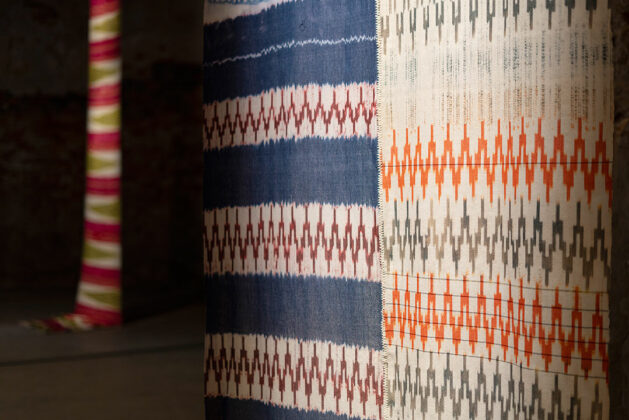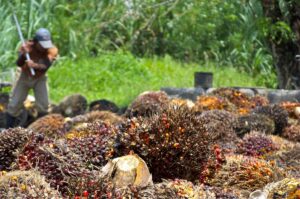Sounds made visible

VISUAL artist Gerardo Tan visited a weaving house in Miag-ao, Iloilo in 2016. While there, he was captivated by the sounds of the pedal looms as the weavers were working. To him, the activity sounded like music. This experience made him wonder how it would be like if the looms’ sounds were read. So over the next six years, he worked on the project that has now become the Philippine Pavilion’s installation for the 59th International Art Exhibition at the Venice Biennale.
Established in 1895, the Venice Art Biennale is the oldest and arguably most prestigious international art exhibition. It is held every two years in the Castelo District of Venice in Italy.
The Philippines first participated in the Venice art fair in 1964 with an exhibition of paintings and sculptures by National Artists for Visual Arts José Joya and Napoleón Abueva.
It took another 50 years before the Philippines returned to Venice.
This year’s Philippine Pavilion at the Arsenale features the collaborative project titled Andi taku e sana, Amung taku di sana (All of us present, This is our gathering) by Mr. Tan, ethnomusicologist Felicidad A. Prudente, and Ifugao weaver Sammy N. Buhle. It is curated by Yael Buencamino Borromeo and Arvin Flores.
The exhibition is a convergence of traditional and contemporary art forms: textile weaving, painting, video and sound installation.
“…The exhibit aims to represent the translation of cultural data into visual communication, collectively promoting Philippine traditions and ensuring its endurance through universal exchange,” co-curators Buencamino Borromeo and Flores wrote in their curatorial statement.
CHANTS MEET VIDEOAndi taku e sana, Amung taku di sana are the opening lines of a sogna, a chant performed extemporaneously in gatherings of the Madukayan people (a Kalinga ethnolinguistic community of the Philippines located in the northern Cordillera region). The chant is performed prior to a peaceful dialogue among the members of the community.
Performed by chanter Jose Pangsiw, the sogna was transcribed by Ms. Prudente and subsequently used by Mr. Tan for the work, Speaking in Tongues — a two-channel video installation featuring the translation of a traditional chant into a performative painting using squid ink as a medium.
The exhibit’s main installation, Renderings, shows the transmission of the sounds made by traditional weaving practices remediated in video and textile.
SOUNDS MAKE FABRICFor the textiles in Renderings, Mr. Tan reached out to Ms. Prudente of the UP College of Music to assist with the notations of audio recordings taken in different weaving houses around the Philippines. For these to be translated into woven fabric, Mr. Tan and Ms. Prudente went to Ifugao and sought out Mr. Buhle upon the advice of Dr. Analyn Salvador-Amores, director of Museo Kordilyera in UP Baguio. Ms. Prudente’s notation provided a visual representation which was sketched by Mr. Tan, before Ifugao weaver Mr. Buhle, transformed these into woven fabric.
The resulting textiles do not use traditional weaving patterns, but are “woven sound transcriptions,” exhibition co-curator Ms. Buencamino Borromeo said in her speech at the Philippine Pavilion launch on April 21 which was streamed on Facebook.
Ms. Borromeo added that transcribing the rhythms of the looms into notations “required disciple and extensive experience in music transcription to accurately capture the timing of the looms’ movements.”
“The exhibition encourages one to be open to collaborative work because when you create new knowledge, you are able to produce something unique,” Ms. Prudente said.
Mr. Buhle, who comes from a family of traditional weavers said that he “needed to transform my way of technique” for the project.
“They collaborate with me on the patterns that I need to weave. They give me the final print of the layout,” Mr. Buhle said. “I will ask them to video the weaving process that I do until the fabric is finished.”
“A lot of my work has this self-referential aspect to them. It feeds back on itself. There’s a loop that’s being created. As a viewer, when you approach the work, you present it with different realities at the same time. There’s a dialogue between materials and processes,” Mr. Tan said.
VIRTUAL TOURThe Philippine Pavilion in Venice is open for public viewing until Nov. 27. The Philippine Pavilion is also accessible to a global public through its digital programs and virtual tours.
The Philippine’s participation at the Venice Biennale is a collaborative effort of the National Commission for Culture and the Arts, the Department of Foreign Affairs, and the Office of Deputy Speaker and Congresswoman Loren Legarda.
The artists and curators are hopeful that an exhibit of the installations can be put up in the Philippines after the Venice Biennale.
For more details, visit philartsvenicebiennale.org, or Facebook and Instagram via @philartsvenice. — Michelle Anne P. Soliman




